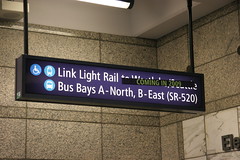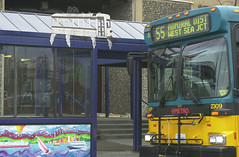On the Beacon Hill mailing list today, Mike Cheney asked the question:
“Why has the hill been broken up into 3 sections? You have north beacon, mid beacon and south beacon. Seems like creating divisions in one huge neighborhood could lead to prejudice and a further division of neighbors. Aka my neighborhood is better than yours kind of thing then you end up with even a bigger problem.”
This is an interesting question. Why is Beacon Hill divided into three parts on the city’s neighborhood map, informal as it may be? Unlike Mike, though, I wonder why it’s not divided even more. The Hill is huge. Look at a Seattle map. Beacon Hill is too big to be one neighborhood–it’s really a meta-neighborhood, a large area containing several smaller neighborhoods. North Beacon has its own personality that differs from South Beacon and Mid Beacon. Each area has concerns that the others do not have. For example, North Beacon has sidewalks almost everywhere. South Beacon… not so much. So it makes sense that South Beacon would have sidewalks as a priority, while people in North Beacon would prioritize other things.
A successful, sustainable neighborhood is, ideally, defined by a five-minute or 1/4 mile walking distance from center to edge, and being relatively self-contained and walkable. It would contain about 5,000 residents, and local schools and businesses to serve them. Basically, it’s an area that is small enough that people can easily access local services within the neighborhood, while being large enough to support those services. (It sounds a little small by sprawling modern Seattle standards, but small neighborhood units like this used to be in place here. Look at any old Seattle neighborhood that was built-up before the 1930s, particularly along one of the old streetcar routes, and see how every half mile or so there is a small clump of old commercial buildings, now mostly used as residences. The rise of the car and modern zoning practices have killed a lot of the old neighborhood business districts.) Incidentally, this is approximately the same size as a census tract.
Look at a map: a walk down Beacon Avenue from north to south is more than five miles. To get some perspective–as the crow flies, five miles north of the North Beacon business district “junction” is the University of Washington. Five miles east is Mercer Island. Five miles west is Alki Point. Five miles northwest is Queen Anne. All very different places from Beacon Hill. You can see that Beacon Hill is a pretty huge area! Even dividing it into three zones gives you three “neighborhoods” that are larger than the ideal neighborhood unit.
Each area is going to have its own unique concerns and issues (for example — people in the area near Beacon and Stevens care about what happens to the Stevens Place (Triangle) Park on Beacon, but people who live three miles south on Beacon don’t have any particular interest in that issue), and I don’t believe that recognizing that is a bad thing. I think even smaller neighborhoods on Beacon Hill would be useful, if it meant that we had more of a “community” within our neighborhoods. Folks in South Beacon already feel somewhat marginalized by the focus on North Beacon, and eliminating divisions within the Hill would probably worsen that perception.
Please tell us what you think by commenting here on the blog.

